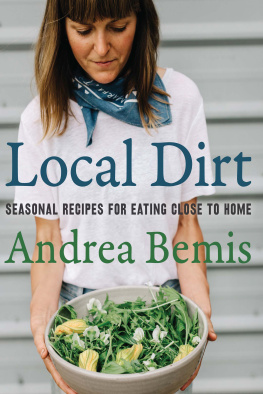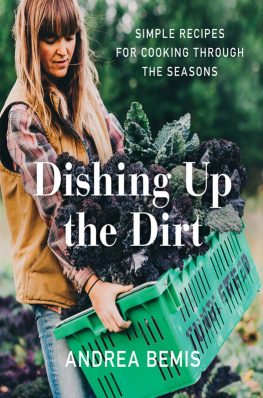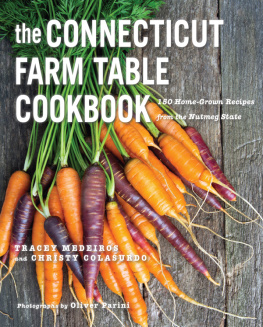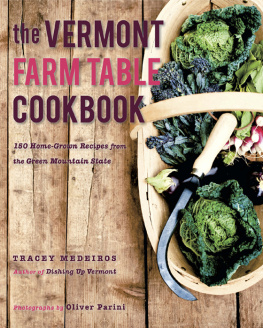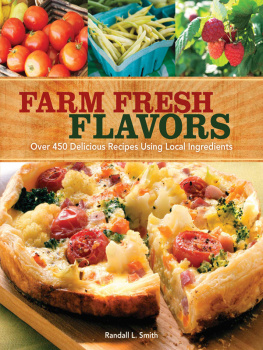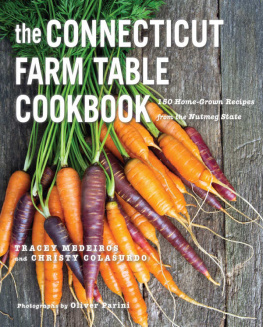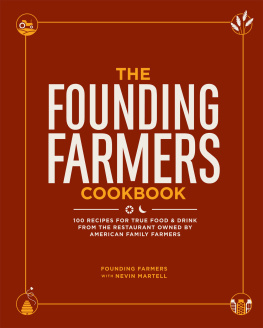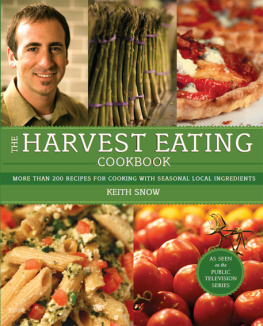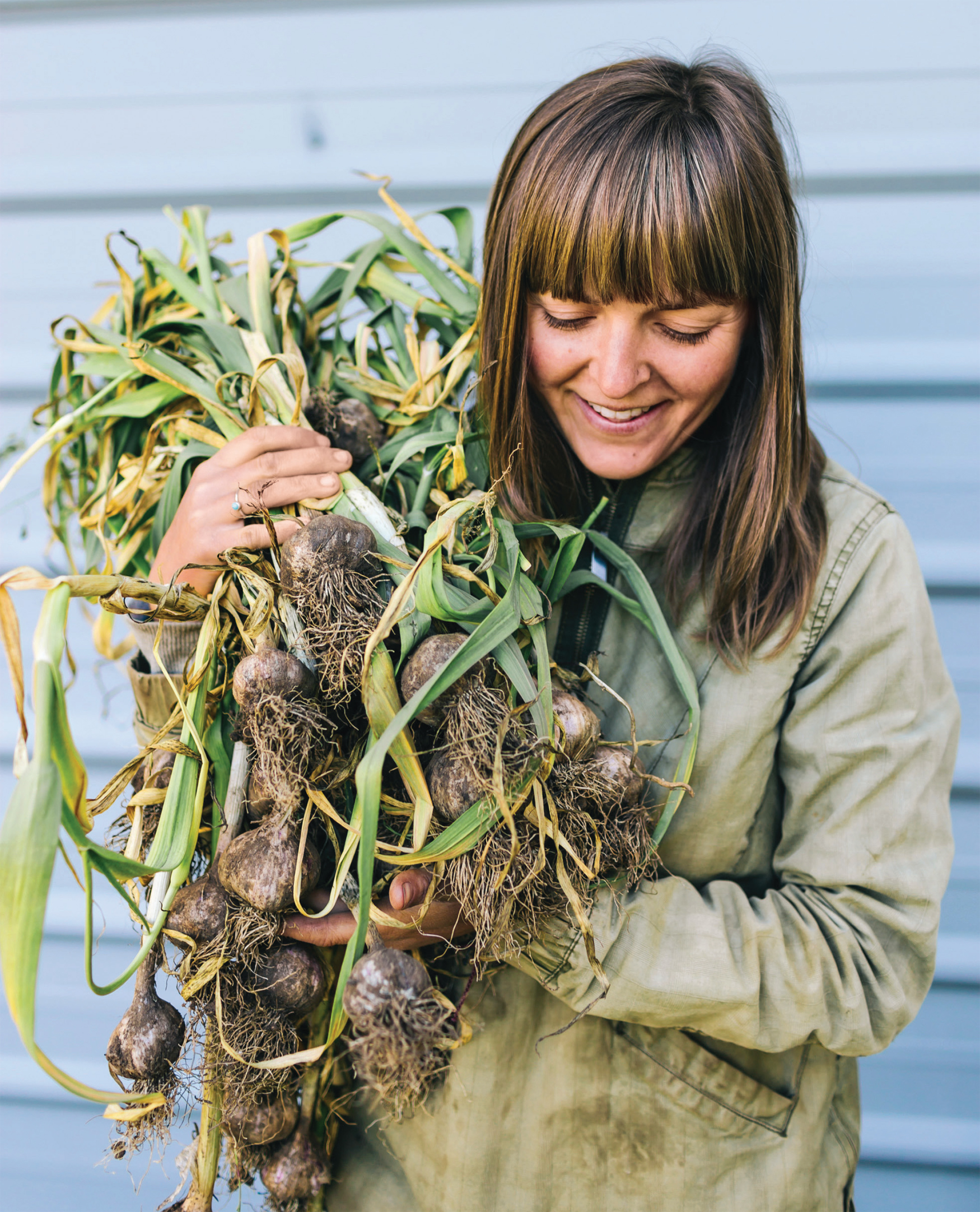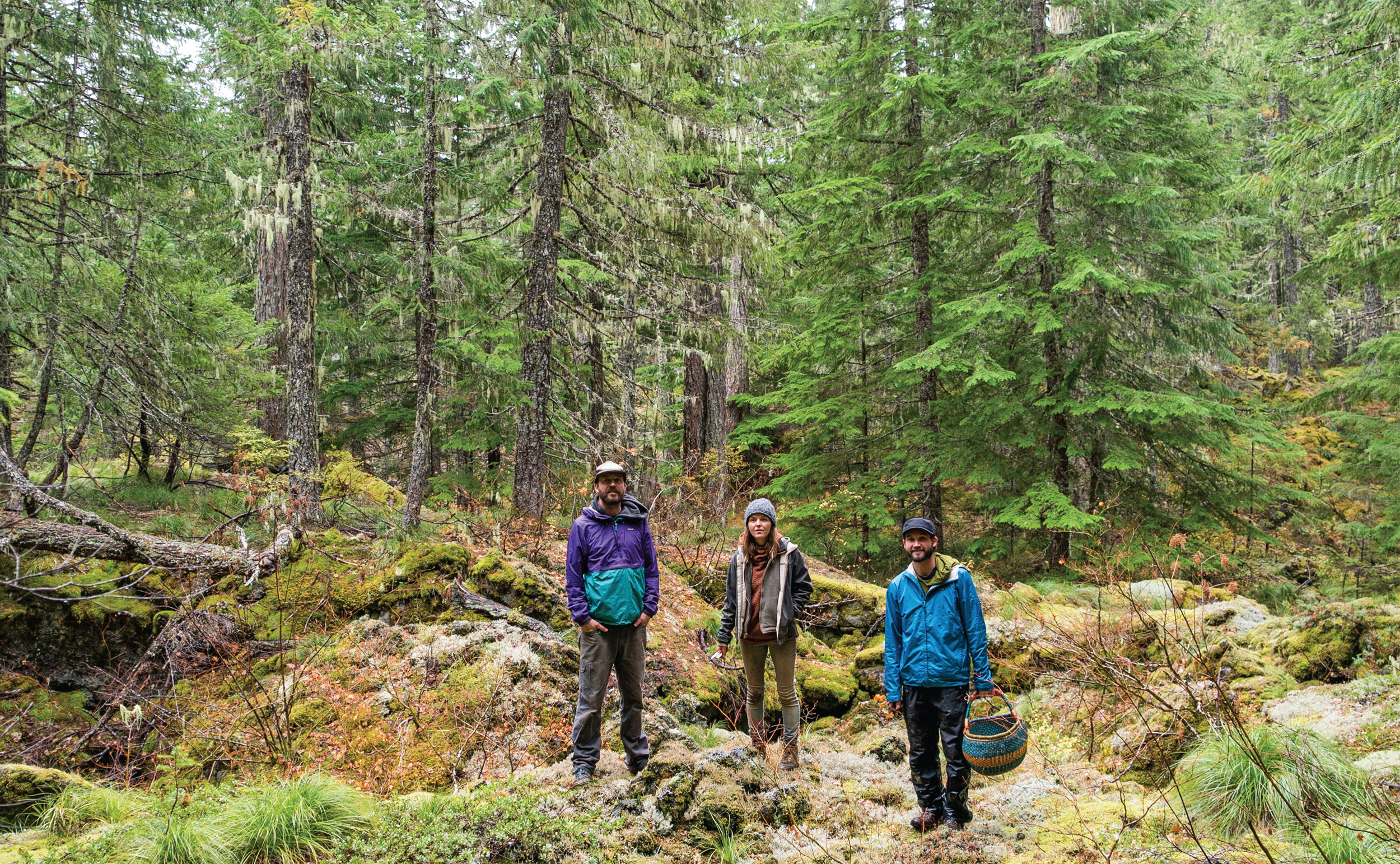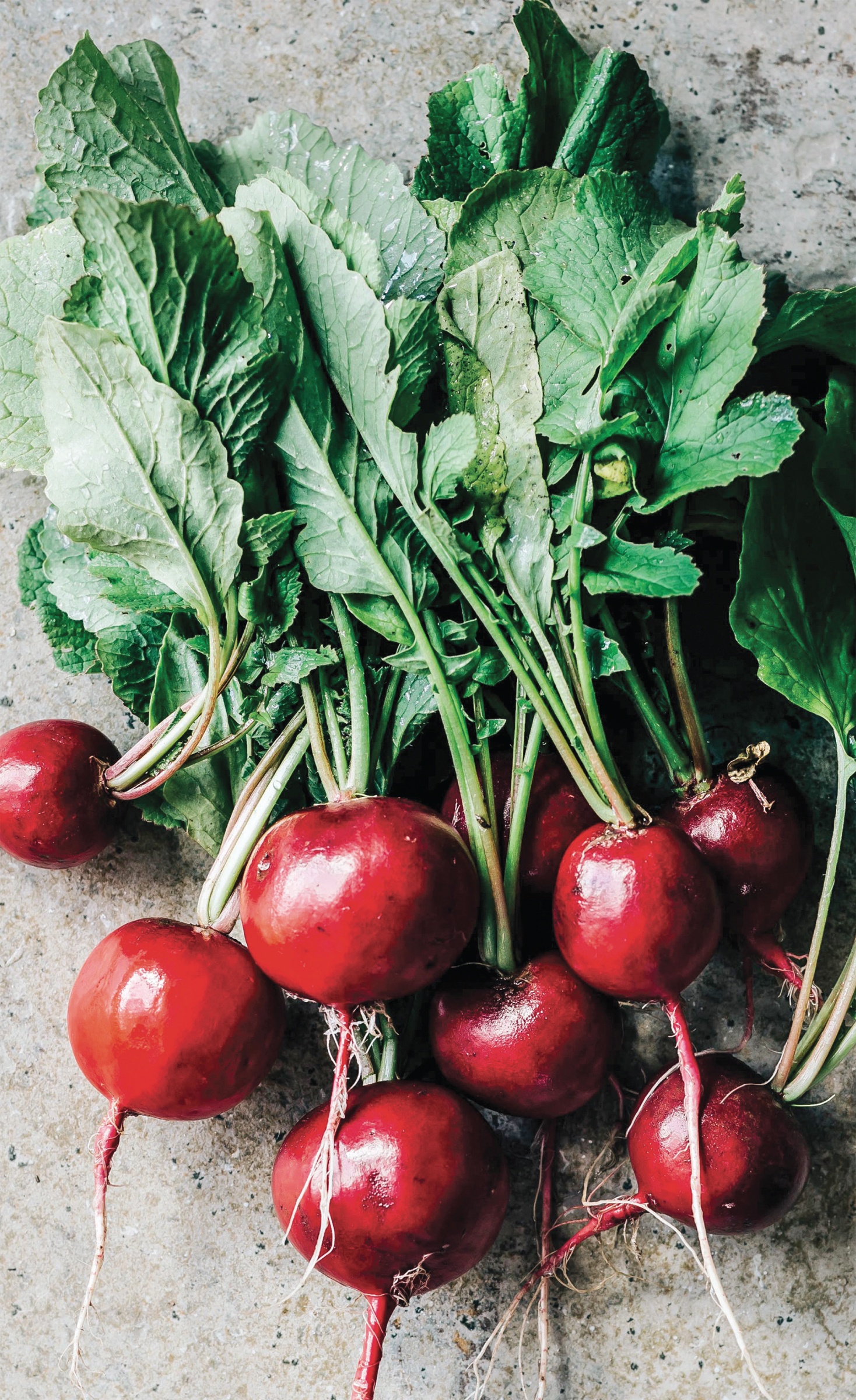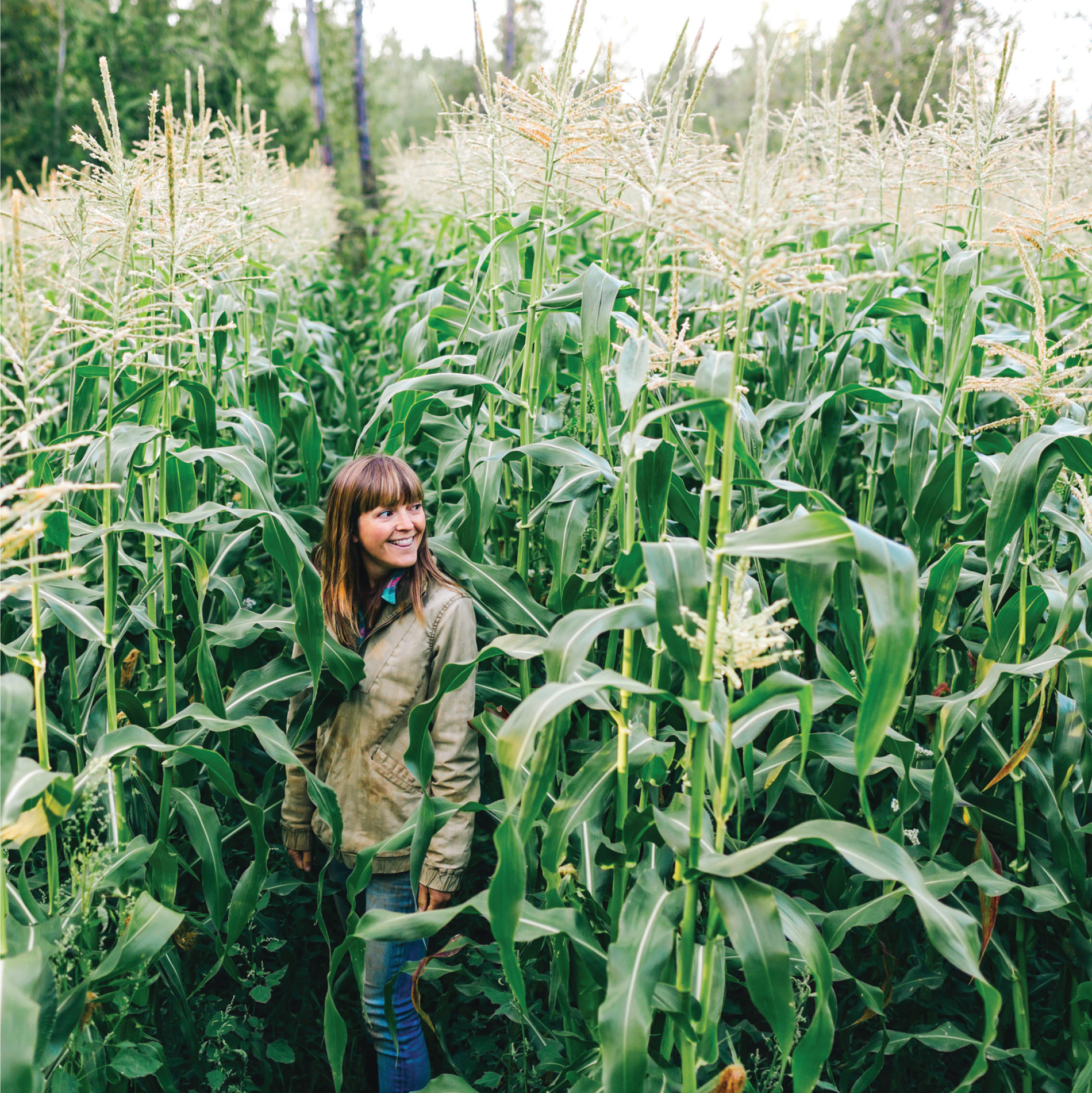Contents
Guide
Our hands can plant the seeds of peace, community, love, and hope. Pepper, my sweet girl, welcome to the dirty life.
Contents
The recipes in this book make use of ingredients that I was able to find locally in the Pacific Northwest. Feel free to follow the recipes as they are written or adapt them to use only ingredients that are local to you. Youll notice that in a lot of recipe ingredient lists I reference cooking fat. What is intended here is to use whatever fat youve got on handsuch as butter, lard, bacon fat, oil, or ghee. They can all be used interchangeably in most cases when it comes to sauting veggies or preparing meat. In each recipe youll find a guide on how to make substitutions, including what you can expect to find at your local farmers market or grocery store. These recipes are meant to be a blueprint for you to customizeswapping in, swapping out, adding a little bit of this, or taking away what you dont have. Theyre very forgiving and were created with the idea that you can make them your own with what youve got.
Every cook, every kitchen, and every ingredient is going to be a little different. So know that when youre cooking in your own oven, the food you make may look and taste a little different from the descriptions in a cookbook. And thats fine! My general approach to cooking is to not take it super seriously, because cooking and eating should be fun. Taste-test as you go and enjoy yourself.
At the end of this book Ive included resources to help you learn how to locate your nearest farmers market, apply for food stamps that you can use at farmers markets if you qualify, purchase whole animals at a good cost, and find local grains or dairy. Check for how to do this in the region you call home.
The month of September started off in the most terrifying way (for me, that is): sixty miles offshore in the Pacific Ocean with three fishermen of the Tre-Fin Day Boat Tuna Company, whom Id met only minutes before hopping aboard their small commercial fishing boat. As a woman who doesnt swim well and is generally nervous around large bodies of water, this wasnt a situation I ever imagined Id be in. But I was determined to experience firsthand how one of my favorite fish ends up on my table. After all, this was what my experiment with eating locally was supposed to be about: stepping out of my comfort zone and fully embracing new experiences, new places, and new people.
As I climbed on board their boat, one of the fishermen asked if I tend to get seasick. Seasick? I thought. I couldnt recall a time in my life when I was in a situation where seasickness was an option. Good, they said, because we dont turn the boat around for anything. Were out here until we catch our fish, run out of bait, or it gets dark on us. This conversation took place at six in the morning. It wouldnt be dark for twelve more hours. I was hoping theyd catch those fish first, before the other things happened. My stomach knotted up a bit, and panic set in. We hadnt even left the dock, and I was already second-guessing this whole local experiment. Maybe I could have just interviewed these guys on land instead of actually going to work with them? But within minutes, we were on our way and I was in it for the long haul.
Getting out into the open sea meant crossing the Columbia River Bar, one of the most dangerous water passages in the world. I kept a close eye on the expressions of the fishermen around me. Everyone was quiet, the captain focused and serious. I white-knuckled the giant beanbag I was sitting on, which helps absorb the shocks of the waves. The passage was bumpy as hell, and after each climb up a gigantic swell, our tiny boat would crash down into rough water nose-first. Again and again, wed climb, crash, climb, crash. I was waiting for the boat to split in half. After what felt like hours, we found ourselves in calmer water. It was the first time Id been on a boat in the ocean and couldnt see land. I felt alone and vulnerable but tried not to let it show on my face.
But my fears started to fade away once the nerves from crossing the bar began to wear off. Eventually, sixty miles out, we slowed down and it was still kind of wavy but not treacherous. After talking to the guys for a while, waiting for the fish to show up, I started to actually enjoy myself. Here we were, four people on a boat, so close in the middle of nowhere, the stakes so high that trust was mandatory. As we talked, we discovered that we had a lot in common. Each day, we were all out there providing food for our communities, though I joked with them about the obvious truthpicking kale is way less harrowing.
Tre-Fin started with an ideathat a Pacific Northwest albacore fishery maybe doesnt have to totally rely on the international market. I had no idea that almost all the albacore tuna I purchase at the grocery store is probably caught right there in my local waters but then shipped to China or Indonesia for processing and packaging before being sent back to our neighborhood grocery shelves. That supply chain just doesnt make sense and doesnt sit well with the fishermen that I was on board with. So these guys do things a little differently. Instead of going out for days or weeks at a timewhich is how most large-scale commercial boats operatethey go out for just a day at a time and pack their catch in ice to cool it down for the trip home in the evening. This approach makes for a lot of bumpy early-morning bar crossings. Once their catch arrives back on the dock, they process it by hand into its best cuts and package it. Loins and loin medallions go into the freezer in vacuum-sealed bags while the less choice cuts are put into pouches as canned tuna. They sell the fish at farmers markets in the greater Portland area and also run a small CSF (Community Supported Fishery). Theyre committed to doing things the local way, because they feel its better for the product, the environment, and the consumerbut its also the hard way.
In terms of how to catch an albacore, I learned the process, all right. When I hopped on board the boat, I didnt expect that I would actually be reeling in fish. But when the guys needed the extra hand, I had to jump right into action. I was nervous that Id lose the fish or, worse yet, let go of the rod, but not helping felt as unnatural as sitting on the couch watching TV while Taylor harvests carrots. Before I knew it, albacore were flying into the boat. It was go-timeso intense, with a loud and crazy sense of urgency. But as we started reeling in fish, netting them, stunning them, and making kills, I felt a sort of rhythm cutting through all that chaos. It made me feel at home, because it happens on the farm, too. This dreamy awareness of what Taylors doing, whether hes right next to me stuffing starts into the ground or a quarter mile away up at the top of the field on the tractor. Knowing where hell be next. And him knowing where Ill be. Thats how these guys were as they started catching fish, and I had to do it, tooeveryone jumping around each other, under this line, over that one, tossing nets around, pulling fish. Everyone knows each others move before they do. Your awarenesses blend and your rhythms are connected because they have to be for the whole thing to work. You have to function as a single unit, or everything falls apart. So, out there in the Pacific Ocean, I felt this unexpected common thread between fishing and farming. You have to do the dance. Go together, be one, or it just wont work.

